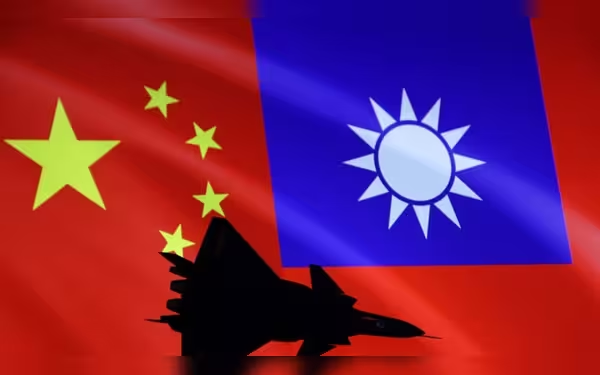Saturday, November 16, 2024 05:39 PM
Taiwan Reports Record Surge in Chinese Warplanes
- Taiwan detects 153 Chinese warplanes in 24 hours.
- Military drills labeled 'Joint Sword-2024B' escalate tensions.
- 28 aircraft crossed the median line of Taiwan Strait.
 Image Credits: channelnewsasia
Image Credits: channelnewsasiaTaiwan reports a record surge in Chinese warplanes amid rising military tensions and ongoing drills.
In recent times, tensions between Taiwan and China have escalated, particularly in the realm of military activities. Taiwan's defence ministry has reported a significant increase in the number of Chinese warplanes operating near the island. This surge was particularly evident during a military exercise conducted by China, which was labeled "Joint Sword-2024B." The drills were held as a response to remarks made by Taiwan's President Lai Ching-te during a national day speech, which Beijing strongly criticized.
On October 15, Taiwan's defence ministry revealed that it had detected a record-breaking 153 Chinese military aircraft in the airspace surrounding the island within a 24-hour period. This figure surpassed the previous record of 125 aircraft reported just a day earlier. Among these aircraft, 28 were noted to have crossed the median line of the Taiwan Strait, a boundary that has historically served as an unofficial demarcation between the two sides. However, China has openly rejected the legitimacy of this line.
The increase in military activity is not merely a show of force; it reflects the ongoing tensions and the complex relationship between Taiwan and China. The drills conducted by China are often viewed as a warning against what it terms "separatist acts" by Taiwan. This situation raises concerns not only for the people of Taiwan but also for the broader international community, which watches closely as these developments unfold.
As the situation continues to evolve, it is crucial for observers to understand the implications of such military maneuvers. The presence of a large number of military aircraft in close proximity to Taiwan could lead to miscalculations or unintended confrontations. It is essential for both sides to engage in dialogue to prevent escalation and to seek peaceful resolutions to their differences.
The record surge in Chinese warplanes around Taiwan serves as a stark reminder of the fragile state of peace in the region. As tensions rise, it is imperative for all parties involved to prioritize communication and diplomacy over military posturing. The hope remains that through understanding and cooperation, a path towards stability can be forged, ensuring a safer future for both Taiwan and its neighbors.













